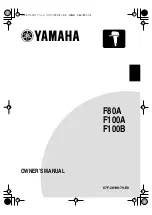
SP
old
SP
old
SP
1
PUSH SP
The stack pointer is changed after
a PUSH SP instruction.
SP
1
SP
2
POP SP
The stack pointer is not changed after a POP SP
instruction. The POP SP instruction places SP1 into the
stack pointer SP (SP2 = SP1)
Item n−1
Item.19:16
Item.15:0
SP
old
SP
I3
I1
I2
I3
0xxxh
0xxxh − 2
0xxxh − 4
0xxxh − 6
0xxxh − 8
I1
I2
SP
0123h
SP
I1
I2
I3
SP
PUSH #0123h
POP R8
Address
0
Stack Pointer Bits 19 to 1
19
1
0
MOV.W 2(SP),R6 ; Copy Item I2 to R6
MOV.W R7,0(SP) ; Overwrite TOS with R7
PUSH #0123h ; Put 0123h on stack
POP R8 ; R8 = 0123h
CPU Registers
117
SLAU367P – October 2012 – Revised April 2020
Copyright © 2012–2020, Texas Instruments Incorporated
CPUX
shows the stack usage.
shows the stack usage when 20-bit address words are
pushed.
Figure 4-5. Stack Pointer
Figure 4-6. Stack Usage
Figure 4-7. PUSHX.A Format on the Stack
shows the special cases of using the SP as an argument to the PUSH and POP instructions.
Figure 4-8. PUSH SP, POP SP Sequence
4.3.3 Status Register (SR)
The 16-bit status register (SR, also called R2), used as a source or destination register, can only be used
in register mode addressed with word instructions. The remaining combinations of addressing modes are
used to support the constant generator.
shows the SR bits. Do not write 20-bit values to the
SR. Unpredictable operation can result.















































